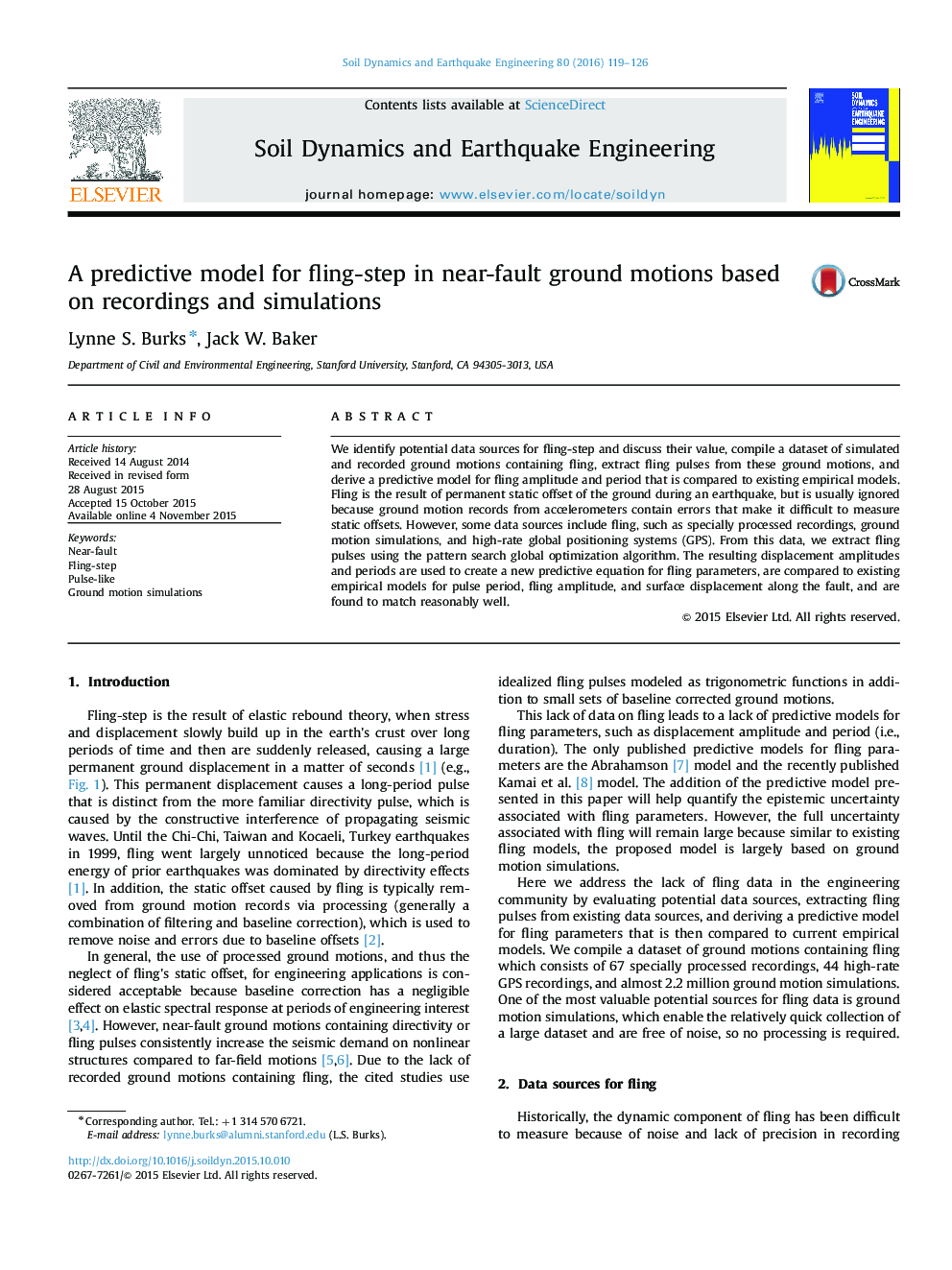| Article ID | Journal | Published Year | Pages | File Type |
|---|---|---|---|---|
| 6771742 | Soil Dynamics and Earthquake Engineering | 2016 | 8 Pages |
Abstract
We identify potential data sources for fling-step and discuss their value, compile a dataset of simulated and recorded ground motions containing fling, extract fling pulses from these ground motions, and derive a predictive model for fling amplitude and period that is compared to existing empirical models. Fling is the result of permanent static offset of the ground during an earthquake, but is usually ignored because ground motion records from accelerometers contain errors that make it difficult to measure static offsets. However, some data sources include fling, such as specially processed recordings, ground motion simulations, and high-rate global positioning systems (GPS). From this data, we extract fling pulses using the pattern search global optimization algorithm. The resulting displacement amplitudes and periods are used to create a new predictive equation for fling parameters, are compared to existing empirical models for pulse period, fling amplitude, and surface displacement along the fault, and are found to match reasonably well.
Keywords
Related Topics
Physical Sciences and Engineering
Earth and Planetary Sciences
Geotechnical Engineering and Engineering Geology
Authors
Lynne S. Burks, Jack W. Baker,
